If this metropolis is going to become your new home, and you’re wondering, Why should I move to San Francisco? know it boasts numerous tourist attractions. Some of them are famous worldwide, such as the Golden Gate Bridge, and others, like restaurants, green spaces, and vibrant music scenes, entertain all year round. So, don’t sit on the fence and hurry up to organize a cross-country moving service to this amazing place. Combined with mild weather, SF offers an attractive set of advantages for everyone’s taste.
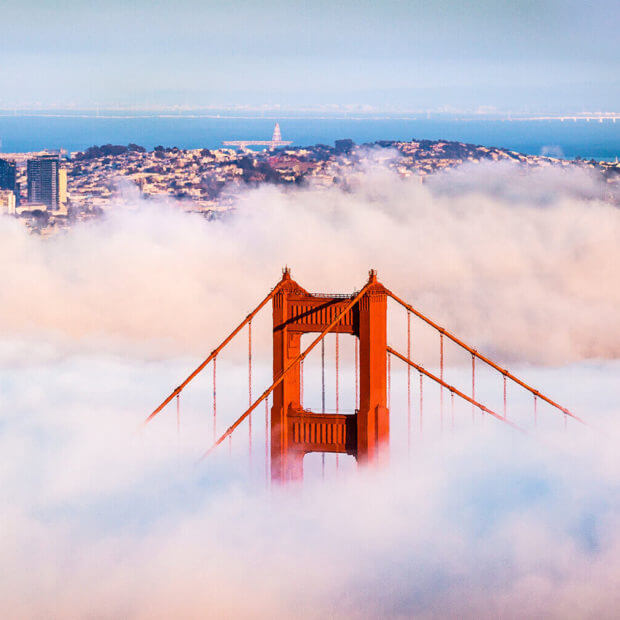
Moving to San Francisco – a Complete Guide
If you’re thinking about moving to San Francisco, you should expect a lot of diversity, as well as beautiful beaches and mountains. When relocating across the country, it’s crucial to know what your new surrounding offers. Luckily, SF, also known as The City and San Fran, has plenty of entertainment in terms of museums, beach sports, the aquarium, the zoo, etc. In addition, low unemployment rates and many job opportunities attract many people to settle permanently and make the relocation to the Bay Area a once-in-a-lifetime experience.
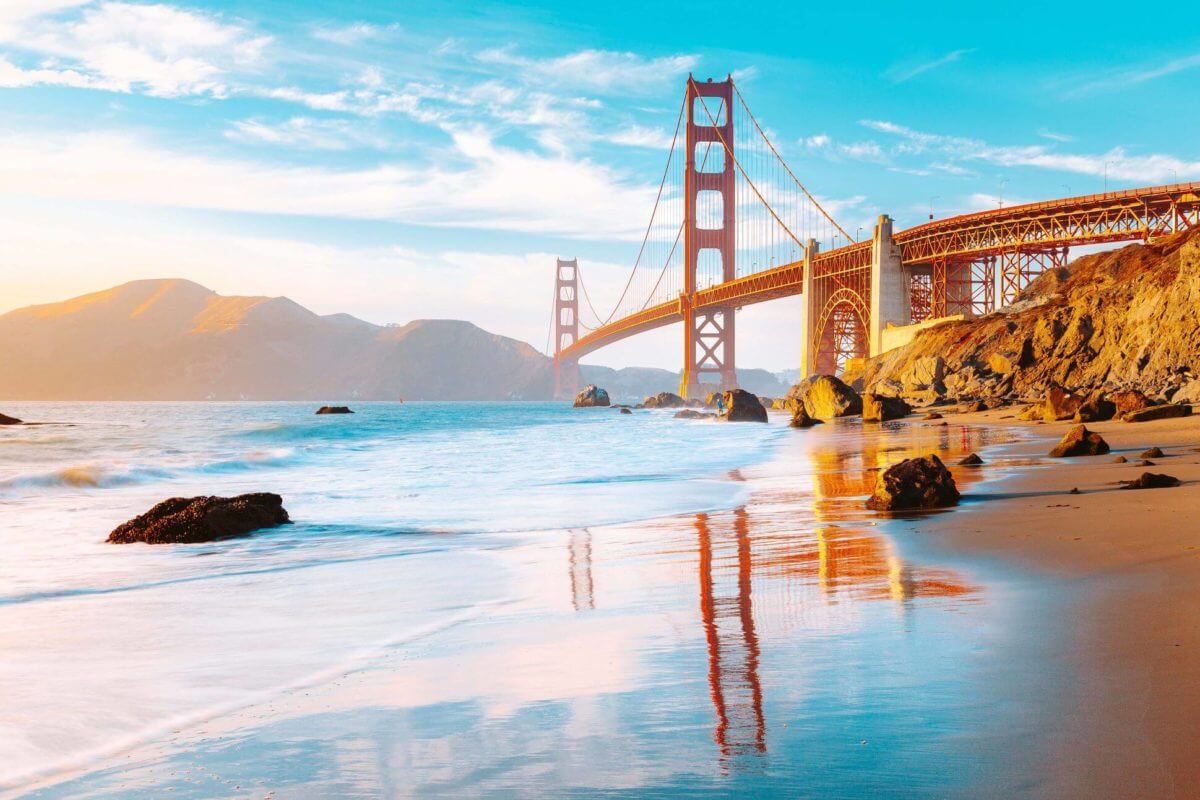 Moving cross country to SF will bring you plenty of new adventures
Moving cross country to SF will bring you plenty of new adventures Things to Know Before Moving to San Francisco
Most people think that Silicon Valley is actually the same as San Francisco, but you have an hour’s drive south of SF to reach this region. Silicon Valley is closer to Cupertino, Palo Alto, San Jose, and the area of Mountain View.
Located in the region known as “The Bay Area,” SF occupies the northern tip of its namesake peninsula. The current metro area population of San Fran is more than 3,3 million. It is the 16th most populous place in the US and the fourth most populous in California.
Also known as the City of Hills (there are 44 hills in SF), the most popular and prominent hills are Twin Peaks, Mount Sutro, and Mount Davidson. They boast more than 900 feet in elevation, and some of them are specific for their swanky residential areas, bustling cafes, and nightlife, such as Nob Hill and Telegraph Hill
If you’re wondering, “Is San Francisco a good place to live in?,” there are some things to know before planning your moving budget, and deciding to hire widely recommended and reliable California cross-country movers to get you there. Firstly, to get it out of the way, SF is situated in a turbulent region in terms of earthquakes.
Southern California is hit by 10,000 earthquakes of various magnitudes each year, mostly smaller ones. According to some research, there’s about a 76% chance the 7.0 magnitude earthquake can hit SF in the following 30 years.
On the other hand, California offers a lot of natural wonders, among which are:
- Napa Valley Wine Country, a paradise for wine lovers,
- Lake Tahoe with its turquoise coves and both summer and winter resorts and other scenic sites,
- Death Valley National Park, a desert with salt fields, sand dunes, and a below-the-sea-level lake,
- Sequoia National Park, with the largest trees on Earth which are more than 2,000 years old,
- Redwood National Park with giant redwoods, the tallest trees on the planet, dating back to the Jurassic Period,
- Joshua Tree National Park displays these specific trees in a lunar-like landscape.
And let’s not forget the Disneyland amusement park and Universal Studios Hollywood, a movie studio displaying sets from famous movies.
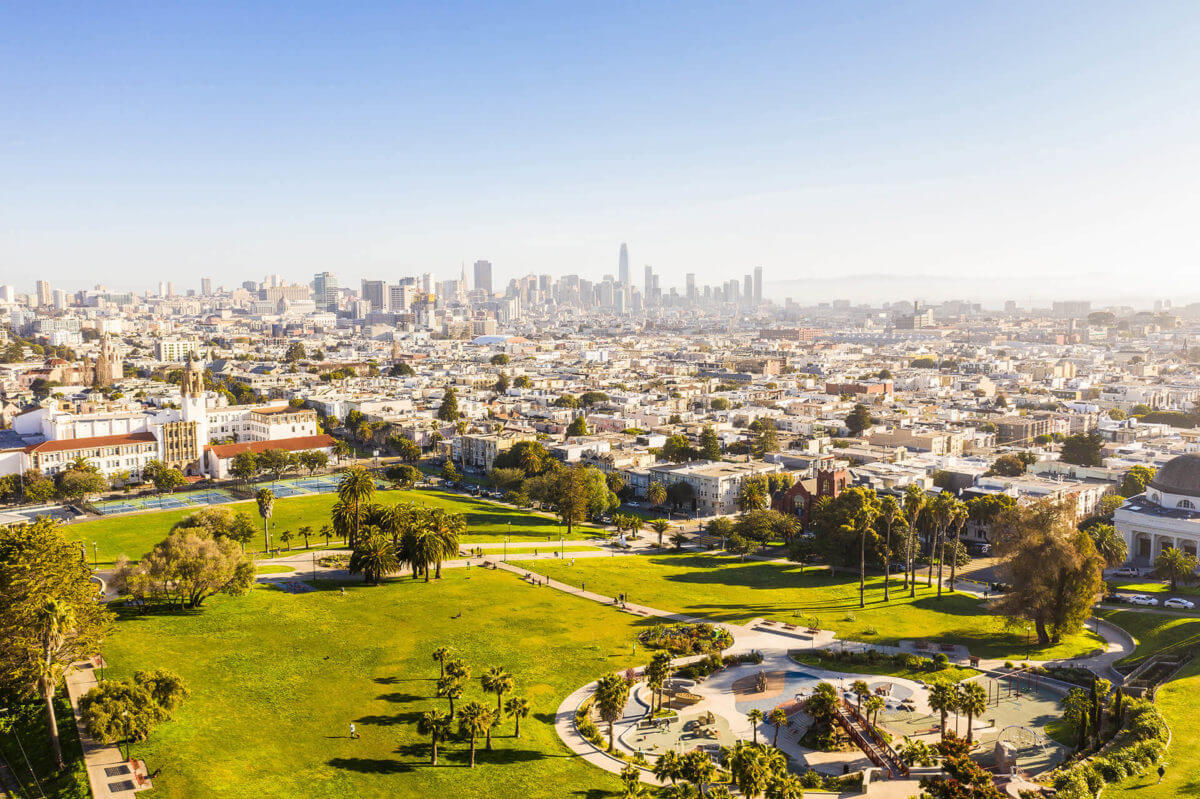 Whether you're relocating for love or a new job, in SF you'll find everything you need
Whether you're relocating for love or a new job, in SF you'll find everything you need The Cost of Living When Moving to San Francisco, California
Before listing any advantages and disadvantages of living in the City by the Bay, you need to take a look at the cost of living in San Francisco. It was ranked as the most expensive city in the world in terms of rent prices, so you should seriously consider finding a job before moving to another state. Of course, when long-distance moving to a big city, you can always expect high prices.
According to Investopedia data, the median rental price is $3,500, meaning you can find areas with rentals well under that sum, but also wealthy parts where rents reach $10,000 per month or more. Luckily, when it comes to utilities, bills are lower than the national average. For the electricity, heating, cooling, water, and garbage you should put aside about $150, and if you need the Internet, it will cost you about $70 more, based on Numbeo data.
Living in SF is a kind of financial seesaw. If you pay less here, you’ll need to leave aside more than in other cities in the US for food and transportation. For example, the typical household spends about $430 per month on groceries. If you choose a metro or bus as your daily commute, your ticket will be around $80, according to Numbeo.
Things are much pricier for drivers, due to car insurance rates averaging $2,257 per year, compared to a national average of $1,548, based on Investopedia data.
Should You Buy Your Home or Rent It When Relocating to San Francisco
Buying a home is a huge investment and requires a lot of planning and saving. Renting, on the other hand, is often cheaper than a mortgage payment. But, what will you choose depends on many factors, such as your needs and where you live.
When relocating to San Francisco, know that it is considered one of the most expensive cities for both renters and homeowners. According to SmartAsset, buying a home in SF isn’t affordable at all, since the median home sale price is $1 million. For comparison, in New York, the median price (single-family) is $403,000, in Los Angeles $576,000, and in San Diego $626,00. So, it’s clear that SF takes the cake.
When it comes to renting, your monthly expenses will depend on the location of your home. Based on Numbeo data, a one-bedroom apartment in the center is about $3,500, while you should put aside some $2,800 for a place further away from the center. For a three-bedroom apartment, the prices range from $4,700 to $6,400, depending on location.
Renting and housing costs are high since there is a shortage of housing options combined with the massive influx of newcomers. And it’s going to get worse. Some statistics indicate that SF will have to provide more than 92,000 housing units and 191,000 additional jobs by 2040 to keep up with this trend.
What Salary Do You Need to Live in the City of San Francisco?
As you can see, SF is not a cheap place to live. Monthly expenses are high and if you’re relocating to this metropolis, keep in mind that you need to have a more than decent income.
It depends on your profession and work field, so the average salary in SF ranges from approx. $42,600 (Warehouse Worker) to $181,000 (Senior Software Engineer) per year, according to Indeed.com.
The average salary for tech workers is the highest in the nation, which shouldn’t come as a surprise, since SF is known for its booming tech industry.
So, are these salaries high enough to cover your costs of living?
According to some studies, to live comfortably in the Golden City, you need a salary of $123,268 per year. That being said, you need to earn about $60,000 to cover your basic needs, such as food, shelter, utilities, and transportation.
How Much Money Should I Save to Move to San Francisco?
When moving cross country, it’s recommended to have your nest egg which should cover three to six months of living expenses. Besides the cost of living in SF, which is tremendously high, think about pre-moving expenses.
Sometimes, they can get you a lot more money than you expect. Contact your long-distance moving company to get informed about prospective relocation costs.
Here are the most common expenses for the first few months after relocating to San Francisco:
- Expenses related to relocation and cross-country movers
- If you’re planning to rent, you should have a deposit and the first month’s rent
- Plane travel expenses
- Everyday expenses (groceries, utilities, gym, entertainment…)
Why Move to San Francisco? Because It’s a Place With Some of the Best Neighborhoods
When searching for a place to live in, you’ll be looking at SF’s best neighborhood that will fit your needs and means. The prices will definitely play a major role in deciding where to settle, and the general rule is that the western part is more affordable, but also foggier.
We’ve narrowed down the list of most desirable areas with various amenities so that you can choose to your liking:
- The Marina is a popular post-college yuppie residential district
- Fisherman’s Wharf boasts all the major hotels and souvenir shops, and it can be incredibly crowded due to plenty of tourists
- Chinatown is a district with the largest population of ethnic Chinese outside of China and there you’ll experience specific vibes of the East
- North Beach, also known as “Little Italy,” is SF’s Red Light and major nightlife district, but also has relaxation and enjoyment areas, such as Washington Square Park, the Beat Museum, the City Lights bookstore, etc.
- The Mission is home to Latinos and hipsters and is filled with a unique Latin flair, as well as tons of incredible street art
- Noe Valley is a pricy neighborhood featuring Victorian and Edwardian houses for families
- SoMa, short for South of Market, is a favorite of tech professionals who cherish the urban feel
- Outer Sunset and Visitacion Valley are perfect for you if you’re looking for the more affordable districts
- Bernal Heights, also known as Maternal Heights, is one of the best places to raise a family in California as it offers good schools and lots of green spaces.
Everybody will be able to find the best place to live in SF that will fit their needs. Just be sure to check how safe your neighborhood is.
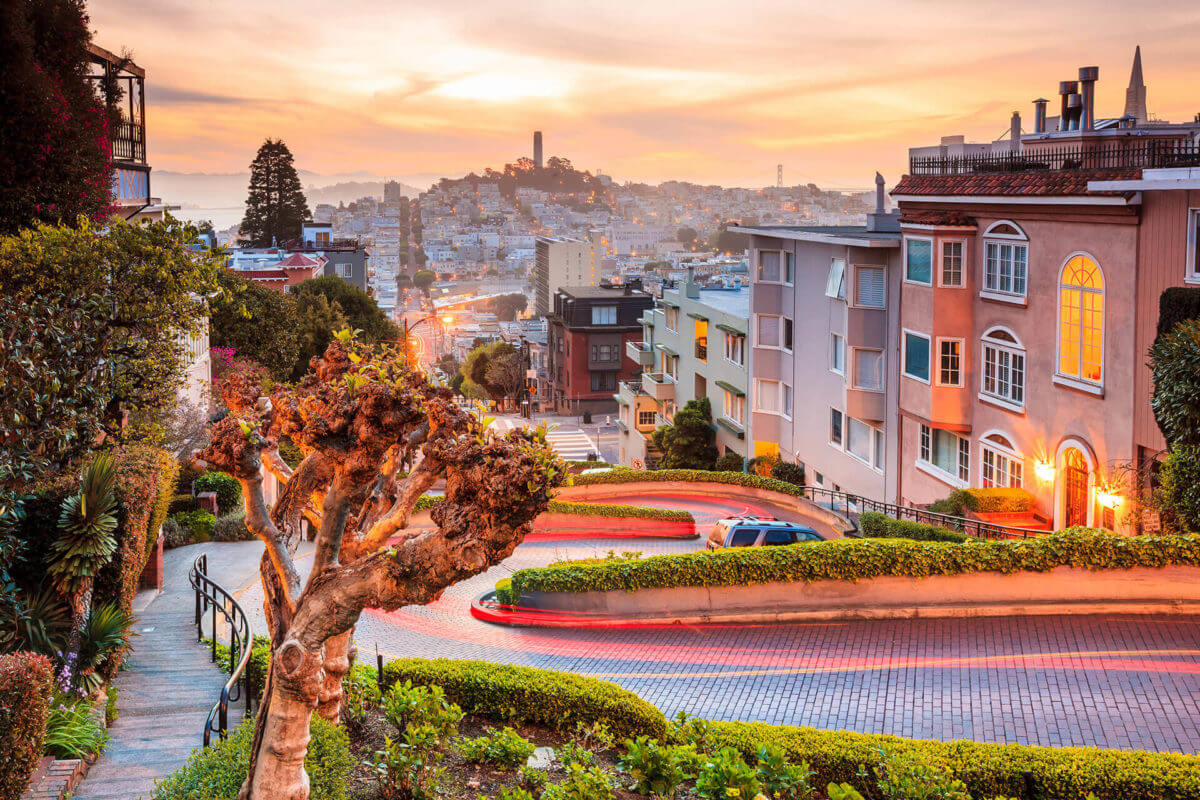 Do you have kids? If so, consider Noe Valley or Bernal Heights as perfect districts for you
Do you have kids? If so, consider Noe Valley or Bernal Heights as perfect districts for you Should I Move to San Francisco? For Job Opportunities in International Companies, Yes
Thanks to some of the richest companies in the world located in the SF Bay Area (Uber, Lyft, Visa, Airbnb, Levi Strauss, Yelp, Twitter, etc.) the city has become not only a tech hub attraction but a home to high-paid engineers and wealthy executives.
Also, in Silicon Valley, tech giants with more than 100,000 employees, such as Google, Apple, Oracle, Hewlett Packard, Facebook, etc, found their homes. That being said, with the right educational background and striving for career advancement, you can find excellent jobs with stable salaries. However, given the high living costs, it is best to inquire about the potential opportunities and see if you can find a job before moving.
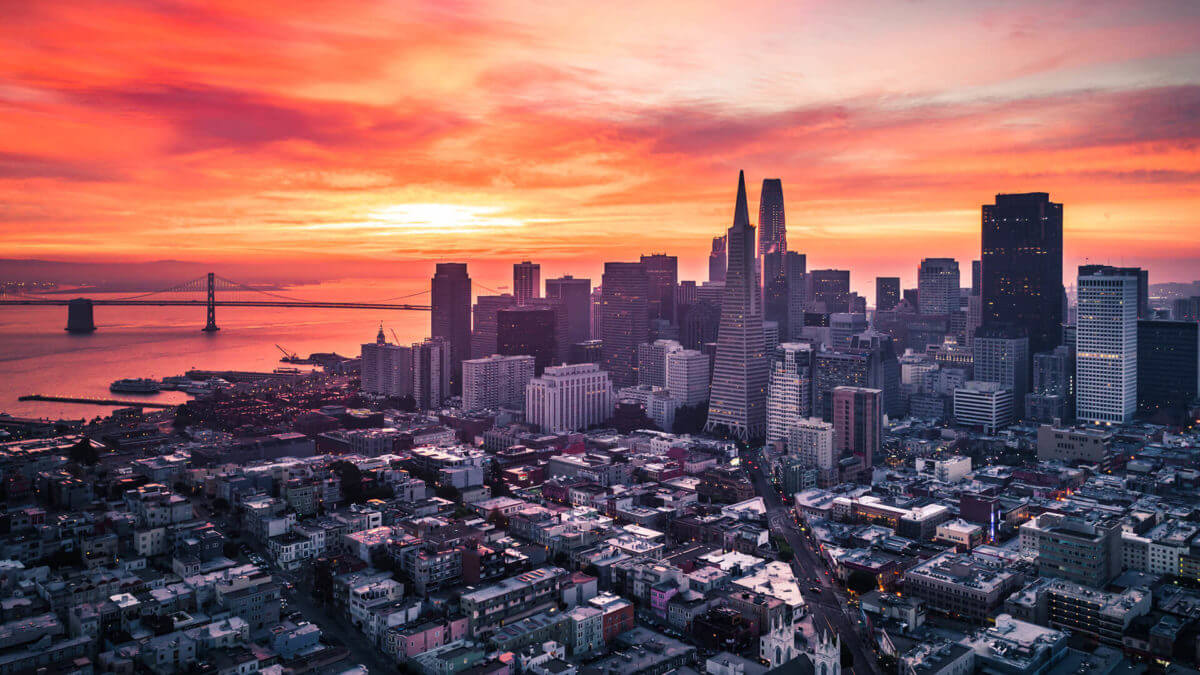 SF is an ideal place for engineers and executives
SF is an ideal place for engineers and executives Transportation Costs Are High but There’s One Important Pro: It Boasts Broad Transport Networks
The most popular transporters are BART – Bay Area Rapid Transit, which is basically a metro system, and MUNI TRANSIT – a network of buses and cable cars. If you want to know more details about SF’s public transportation system, it includes the following:
- City buses (called Muni) – individual rides cost $2.50 and unlimited passes for one person ( valid for 3 or 7 days) range from $21 to $42
- Streetcars/trolleys (Muni Metro)
- BART trains – fares are dependent on distance (from $1.95 to $8.65)
- Cable cars – $7
- San Francisco Bay Ferries
- Golden Gate Ferries – one-way fares range between $6.60 to $13.80
- Golden Gate Transit (SF & North Bay buses)
- PresidiGO (free shuttle.)
As you can see, public transportation is way more expensive than subway tickets in NYC, Chicago, or Boston, because fares in SF are based on distance.
To know more details about getting around San Fran, visit this website and find everything you want about public transportation options.
But, if you’re a fan of healthy living, you can easily get around on foot or by bike, notwithstanding the hilly landscape with steep streets.
If You’re Used to Being Active, You Won’t Need a Car for Moving to the Bay Area – Walk or Ride a Bike
The hilly landscape of SF is an excellent workout for those who want to stay in shape and prefer walking. It is small enough that you can get almost everywhere on foot, and walking around will open your eyes to some beautiful views of the town. So park your car, and go.
Bike-sharing systems are common in SF, and there is a prosperous biking community to blend into. Biking will not only help you live healthier but also save you the trouble of looking for a place to park your car, which can be quite a challenge if you decide to transport your car across the country. In case you want to learn how car shipping works, be sure to search for cost-effective auto transport services.
In any case, riding a bike along the Bay shores may prove to be your perfect option to get to any point within the city and the Wine Country and plenty of other places with great food. That’s what we call killing two birds with one stone. And who wouldn’t want to move around for free, and be healthier for it?
 You don't need a car in SF, because public transportation is efficient and reliable
You don't need a car in SF, because public transportation is efficient and reliable Climate and Weather Expectations
The climate is mild but it can get really foggy, especially in the western part. Frequent weather changes can be puzzling for a newcomer, especially as the fog brings a chill with it. The temperature differences can happen several times during the day, whereas nights are rather cold. There are no particular seasons, just one mild spring-like season with a warmer period in September and October. The gloomiest and the foggiest periods are June, July, and August, when other places usually enjoy their summer. In SF, it’s more likely than not that your day will start, pass, and end with a fog. So be ready for a search or two for your car.
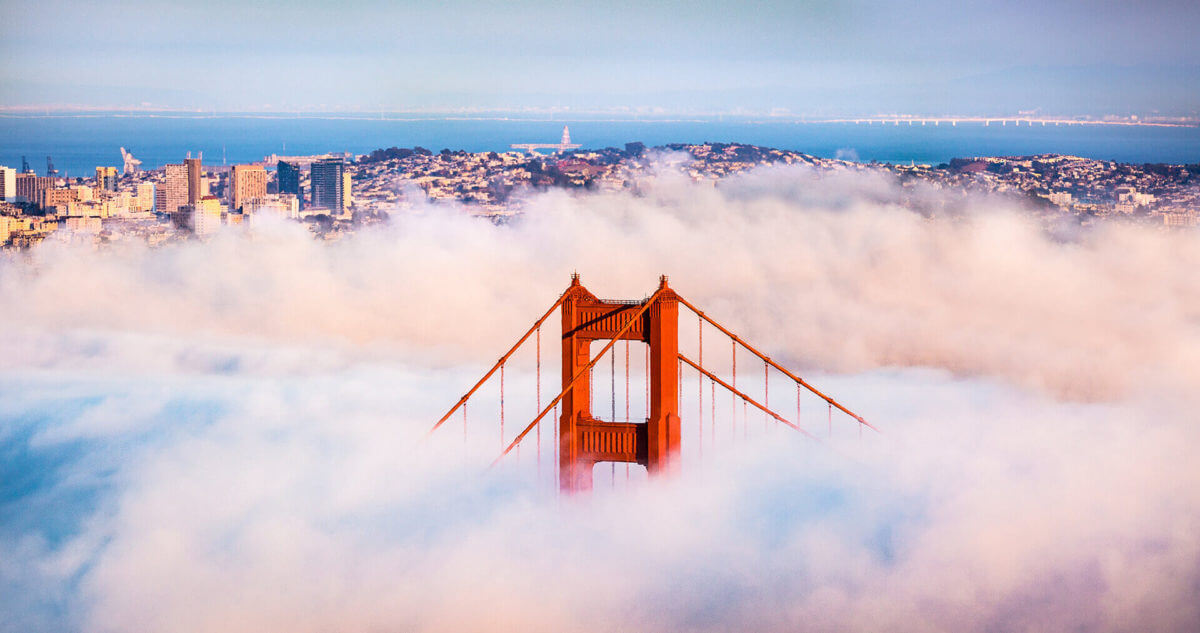 Believe it or not, there are no seasons in SF
Believe it or not, there are no seasons in SF Move to San Francisco and Discover Its Food, Nature, and Festivals
One of the many good things about SF is that you don’t have to pay for gym memberships as you’ll find plenty of outdoor spaces for recreation in the Golden Gate National Recreation Area. If you’re an adventurous type, there are plenty of outdoor activities to enjoy in SF:
- Cruise on the SF Bay
- Take a ferry ride out to Angel island
- Go sea kayaking on the Bay
- Take in the beauty of the Muir Woods and their scenic views
- Hike through Fort Funston
- Head to the beach.
In case you prefer outdoor events, SF is packed with some of the most visited ones, like the annual Outside Lands Music and Arts Festival and Hardly Strictly Bluegrass non-commercial music festival. If you decide to get cross-country moving services and find free boxes and other packing materials for moving, relocate to this place because you will have plenty of things to do in SF.
Among so many other things, there’s one that stands out. The annual Folsom Street Festival in SF has been around since the ’60s and ’70s, and it continues to attract the attention of curious onlookers as well as those who participate in it for years.
Although the venue’s original area is Folsom Street, it expanded over the years to the SoMa district, and 8th and 13th Street. People who come here should be open-minded but bear in mind that this is not a family-friendly event. This is the world’s largest leather event since the men’s leather community has a long history in Bay City.
And after great activities, you’ll want to sit somewhere and enjoy finger-licking meals. Luckily, SF is brimming not only with delicious all-type food but also cozy and pleasant dining spots.
You Can Find the Highest Concentration of Three-Starred Michelin Restaurants When You Relocate to San Francisco
There are many great restaurants in San Francisco, including vegetarian and vegan options, and quite a number of them with Michelin stars (36). It’s home to the oldest restaurant in the state – the iconic Tadich Grill, and great taquerias where you shouldn’t miss more affordable eats, like a Mission burrito. SF cuisine is rather diverse and authentic thanks to immigrants from China, Vietnam, and the Philippines.
If you’re a newbie in Golden Gate City, you should try some of the mouth-watering dishes but keep in check what you eat and how much. Otherwise, you’ll need stretchy pants very soon. Here are San Franciscans’ must-try eats:
- Anchor Steam Beer
- Sourdough Bread
- Mission Burrito
- Dim Sum
- Pork Chops
- Carne Asada Tacos
- Sumo Crunch
- Watermelon Beer
- Garlic Noodles
So hit the road and go search for food and your next favorite eatery. It’s the way of the Bay, and you’ll love it.
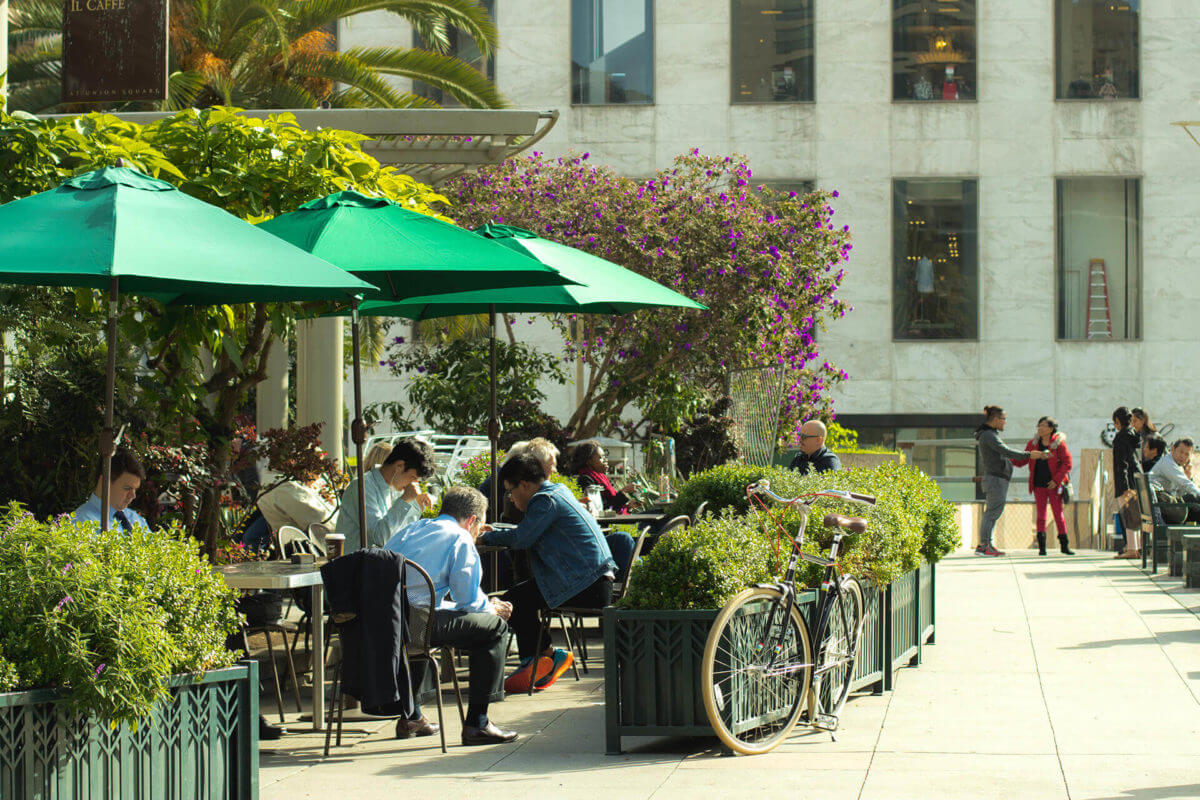 SF boasts some iconic dishes, such as Mission burrito or sourdough bread
SF boasts some iconic dishes, such as Mission burrito or sourdough bread Long-Distance Moving to San Francisco Advice
Cross-country moving companies can be expensive, especially if you’re relocating from a smaller to a bigger place. That’s why you probably want to know the cheapest way to move out of the state, or what is the best time of year to move. Since relocation is a challenging process, you’ll probably have tons of additional questions about making friends in a new city or how to deal with long-distance moving stress.
We can’t provide you with all answers because every change is difficult and requires time. We can only offer long-distance moving services and other related amenities; despite feeling like long-distance movers are tough to afford, we at Cross Country Moving Company listen to people’s concerns.
Being separated from family and friends might be unbearable, but that’s just the beginning. After a while, you’ll get used to it and adjust to your new environment. We’ve prepared some of the most crucial relocation hacks and moving cross-country to San Francisco advice to make your relocation easier:
- You can save money by comparing cross-country moving companies and their quotes,
- If you would like to save on housing costs, you can share a house (or apartment) with a roommate. You can always check some reliable roommate websites and find the perfect person to share living expenses with,
- To save on food, restaurants, and groceries, a good option is to shop local (there are plenty of markets to consider) and find cheap eateries,
- If you want to save on public transport, you should buy a 7-Day Pass and get unlimited travel for $42. Or, if active life is your choice, get a bike. Also, use the advantage of SF’s walkable districts and walk whenever it’s possible,
- If you’re in search of jobs that require relocation but still haven’t found anything that suits you, start from job websites or google recruiters in your industry.
How to Move to San Francisco and Become Happy and Healthy Like Other San Franciscans
Whether you’re relocating for a relationship or moving to a smaller home, you should know that relocation to a big city doesn’t need to be hard at all. Even more, it won’t take long for you to feel at home.
Whatever your reasons to move are, make sure to join a diverse community of other people who have decided to undertake the same cross-country moving adventure. Doing that, they knew exactly why they were doing it.
It’s good to hear that SF is one of the happiest and healthiest places in the nation. And here’s why:
- It is veggie-friendly,
- SF is home to the oldest Buddhist temple in the US, meaning that yoga and meditation are inseparable parts of the city’s lifestyle,
- There are plenty of farmer’s markets with organic products,
- It boasts some of the nation’s best public parks,
- You can enjoy outdoor activities everywhere,
- Culture is an important part of San Franciscans’ lives,
- You can easily reconnect with nature here,
- SF is one of the best cities for biking,
- If you’re moving cross-country with pets, know that SF is a very dog-friendly place.
So, are you looking forward to relocating to California’s Golden Gate City? We are sure you are. Pack your luggage and remember what the song says: “If you’re going to San Francisco, be sure to wear some flowers in your hair…” And we would only add: bring your smile too. Because your new start will be an unforgettable experience.
Frequently Asked Questions About Moving to San Francisco
What Is the Cost of Living in San Francisco?
Here are some statistics related to the cost of living in San Francisco:
- According to Numbeo, the cost of living is 90.21% higher than the national average in the United States (as of March 2023),
- The median home value is $1.4 million, according to Zillow (as of February 2023),
- The average monthly rent for a one-bedroom apartment in San Francisco is $3,200, according to Rent Cafe (as of February 2023),
- The cost of groceries in San Francisco is about 33% higher than the national average, according to Expatistan (as of March 2023),
- According to the Bureau of Transportation Statistics, the average cost of a gallon of gas in San Francisco was $4.25 in November 2021, which is higher than the national average.
How Do I Find a Place to Live in San Francisco?
Finding a place to live in San Francisco can be challenging due to high demand and limited availability, but online listings and working with a real estate agent can be helpful.
What Neighborhoods in San Francisco Are the Most Popular for Young Professionals?
The most popular neighborhoods in San Francisco for young professionals are SoMa, Mission, and Hayes Valley due to their central locations, access to nightlife, and trendy food and drink scenes.
What Is the Job Market Like in San Francisco?
The job market in San Francisco is highly competitive, but offers many opportunities, especially in the tech industry. Other industries such as finance, healthcare, and hospitality are also prevalent in the area.
What Is the Weather Like in San Francisco?
The weather in SF is mild and temperate, with cool summers and relatively warm winters. The city is known for its frequent fog and varying microclimates, which can make weather patterns unpredictable.
How Do I Get Around San Francisco Without a Car?
Getting around SF without a car is easy and convenient thanks to its public transportation system, which includes buses, streetcars, cable cars, and light rail. Also, many areas of the city are walkable and bike-friendly. Ride-sharing services and taxis are also widely available.
What Is the Public Transportation System Like in San Francisco?
The public transportation system in SF is comprehensive and reliable, with buses, streetcars, cable cars, light rail, and subway lines operated by the San Francisco Municipal Transportation Agency (SFMTA). The city is also served by regional transit systems, such as BART and Caltrain, which provide connections to other parts of the Bay Area.
What Are the Best Restaurants and Bars to Visit in San Francisco?
San Francisco is renowned for its vibrant food and drink scene, with many highly-rated restaurants and bars. Some top places to visit include The Slanted Door, State Bird Provisions and Zuni Café for food and Trick Dog, Smuggler’s Cove, and The View Lounge for drinks.
What Are the Top Tourist Attractions in San Francisco?
Popular tourist attractions in SF include:
- The Golden Gate Bridge,
- Alcatraz Island,
- Fisherman’s Wharf,
- Painted Ladies,
- Palace of Fine Arts,
- Lombard Street,
- Chinatown,
- Golden Gate Park,
- San Francisco Cable Cars,
- Coit Tower.
What Is the Nightlife Like in San Francisco?
SF has a lively and diverse nightlife, with a wide range of bars, nightclubs, and music venues. Some popular nightlife destinations include the Mission District, SoMa, and North Beach neighborhoods and the Castro District for LGBTQ+ nightlife. The city also hosts many annual events and festivals, such as the San Francisco Pride Parade and the Outside Lands Music Festival.
What Are Some Outdoor Activities to Do in and Around San Francisco?
SF and its surrounding areas offer many outdoor activities for visitors and locals to enjoy. Some popular options include hiking in the Marin Headlands or Muir Woods, visiting the beaches of Point Reyes or Half Moon Bay, and biking across the Golden Gate Bridge.
Golden Gate Park is a great spot for picnics, jogging, or playing sports, while the Presidio offers opportunities for birdwatching and exploring historical sites. Additionally, visitors can take boat tours around San Francisco Bay, go whale watching, or even try their hand at windsurfing or kiteboarding.
How Do I Prepare for Earthquakes in San Francisco?
To prepare for earthquakes, residents should create an emergency plan, stock up on emergency supplies, and secure their homes and belongings. They should also familiarize themselves with the city’s evacuation routes and stay informed about earthquake risks and alerts.
What Are the Best Schools in San Francisco?
This city has many excellent schools, both public and private. Some top-rated public schools include Lowell High School, Galileo High School, and Rooftop Elementary School. For private schools, popular choices include San Francisco University High School, The Hamlin School, and The San Francisco School.
What Is the Cultural Scene Like in San Francisco?
The city is home to renowned institutions such as the San Francisco Museum of Modern Art, the de Young Museum, and the Asian Art Museum, and many smaller galleries and performance spaces. Additionally, SF hosts annual events celebrating music, film, and other cultural traditions, such as the San Francisco International Film Festival and the Chinese New Year Parade.
How Do I Make Friends and Meet New People After Moving to San Francisco?
Making friends in a new city can be challenging, but there are many ways to meet like-minded individuals. Joining clubs or organizations based on your interests or hobbies, volunteering for local causes, attending community events, and participating in social sports leagues are great ways to connect with others. Additionally, online platforms such as Meetup and Bumble BFF can be helpful for finding new friends in the area.





